#Ernest Parnell
Explore tagged Tumblr posts
Text

1 note
·
View note
Photo
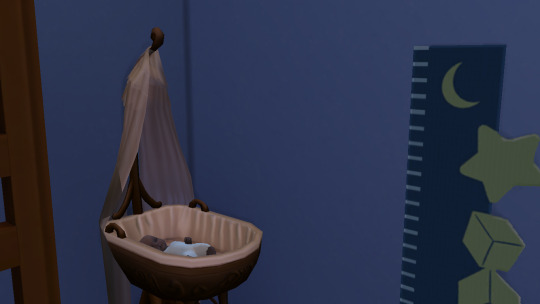
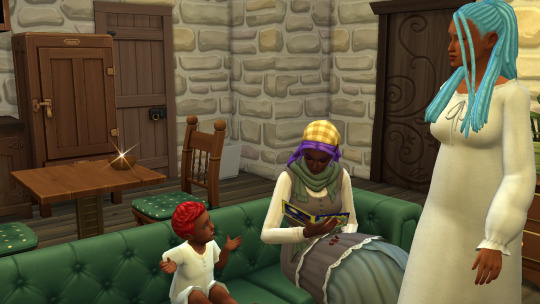
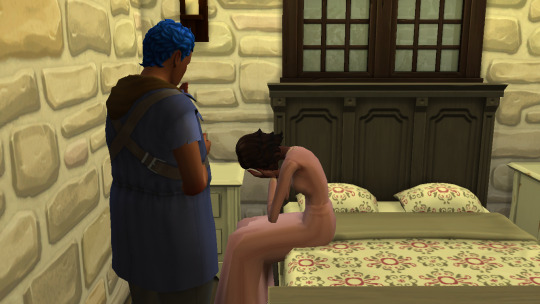


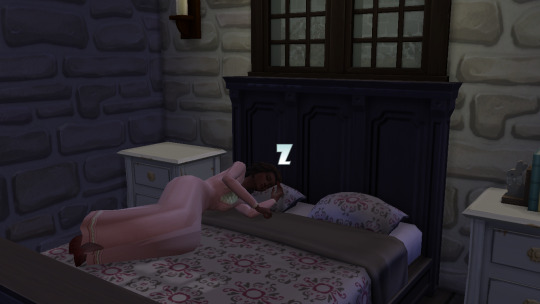
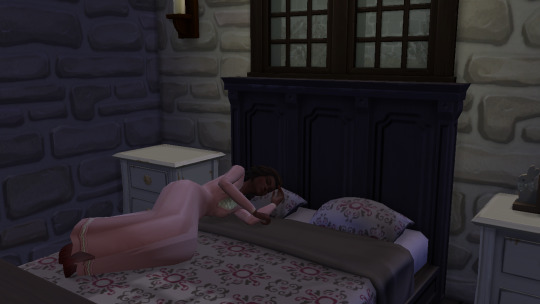
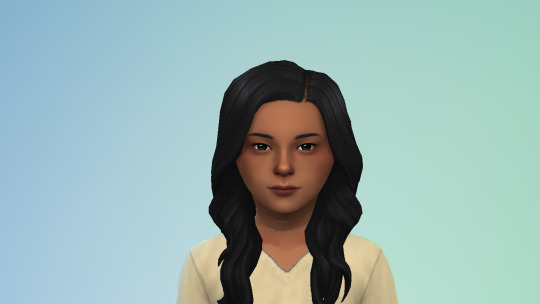
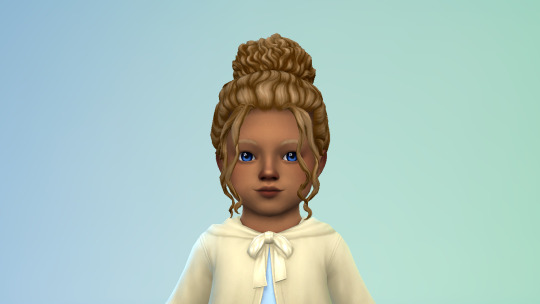
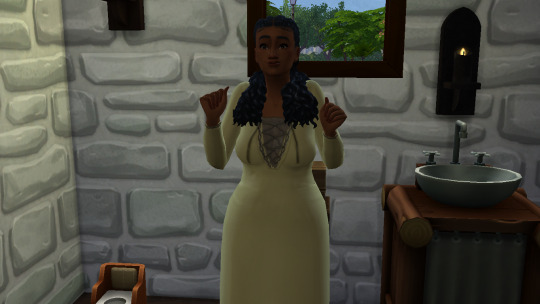
1500-1599 Recap Part 62:
Elizabeth’s daughter Rachel was born not long after Margaret discovered she was pregnant with her twins.
Then of course Samara died which was a big deal having the parent of the heir, Thomasin, pass away. I gave her unofficial generation three status. I thought about having her and Adrian marry before she passed away but decided against it.
Eden became a child and Agnes a toddler.
While the other members of the family were in Henford, Wilmot learned she was expecting Florence.
#Adrian Carlisle#Samara Ernest#Margaret Shanks#Wilmot Jaleel#Parnell Carlisle#Eden Akiyama#John Shanks#Agnes Voss#Rachel Ashtor#The Carlisle Chronicles#Decades Legacy Challenge#1500-1599 Recap#ts4
3 notes
·
View notes
Text
Nominate Merely Roleplayers in the CRIT Awards 2024
The Creator Recognition in Tabletop RPG Awards are open for nominations until the end of May, and lots of our stuff from the past year is eligible!

You all got us to the final ballot in 2 categories last year – thank you again, it was incredible to hear the words "Merely Roleplayers" read out alongside so many luminaries of roleplaying and storytelling!
Could we make it 3 this year?
Could we even make it to a win??
At this nomination stage, you're free to nominate whoever and whatever you like in each category. It's free choice, not multiple choice. Then people/things with enough nominations get put on the final ballot for everyone to check out and vote on.
Most of the categories ask for a link or social media handle to help the CRIT team vet nominations. Plus, I know from filling out my own nominations how hard it can sometimes be to work out what actually falls within the eligibility period (which this year is 1 Jan 2023–29 Feb 2024 – RPG vendors please put the publication date on the game's page!!).
So here's a handy list of what we've done that came out in that period, the categories you could nominate them in, and the relevant links and handles:
Best of Actual Plays
Best Series
Vigil: The Great Fire https://foggyoutline.com/roleplayers-episodes/category/The+Great+Fire
Vigil: Chief/Exec https://foggyoutline.com/roleplayers-episodes/category/Chief%2FExec
Vigil: Fear Itself https://foggyoutline.com/roleplayers-episodes/category/Fear+Itself
(and in the Studio...)
Falling Cadence https://foggyoutline.com/roleplayers-episodes/category/Falling+Cadence
The Queen's Dead https://foggyoutline.com/roleplayers-episodes/category/The+Queen%27s+Dead
The Office Party https://foggyoutline.com/roleplayers-episodes/category/Office+Party
Best NPC
Any and all NPCs from the above 6 productions, including 2023 nominee Ernest Bering, Agent of DoOm...
It's up to you to decide, based on his actions in Vigil: Fear Itself, whether oor Ernie belongs in this category or in:
Best Villain
Any and all villains from the above 6 productions, including Ada Lovelace (Great Fire), Max Dashwood (Chief/Exec), Morrigan the War Chieftain (Chief/Exec), the Harlequin (Fear Itself) and (possibly, as above) Ernest Bering, Agent of DoOm.
Best of their Games
Best Game Master | Indie
Matt Boothman https://www.instagram.com/merelymatt/
Josh Yard https://www.instagram.com/merelyroleplayers/
Best Player | Indie
Ellie Pitkin https://www.instagram.com/merelyroleplayers/
(plays Persephone 'Percy' Byron in Great Fire and Camilla Parnell in Falling Cadence)
Dave https://www.instagram.com/merelyroleplayers/
(plays Mick Mason in Great Fire and Josh in Office Party)
Strat https://www.instagram.com/merelyroleplayers/
(plays Brier in Great Fire and Jerome Picklepants in Office Party)
Chris MacLennan https://www.instagram.com/merelyroleplayers/
(plays Kincaid in Great Fire)
Natalie Winter https://www.instagram.com/winternatters/
(plays Gwynned in Chief/Exec and Bess in Office Party)
Marta Da Silva https://www.instagram.com/nanaluvren/
(plays Harper in Chief/Exec)
Josh Yard https://www.instagram.com/merelyroleplayers/
(plays Jinny Greenteeth in Chief/Exec)
Vikki https://www.instagram.com/merelyroleplayers/
(plays Renko in Chief/Exec and Cadence Fairchild in Falling Cadence)
Alexander Pankhurst https://www.instagram.com/apankhurst/
(plays Graham in Fear Itself and Reginald 'Skinsy' Skinner in Falling Cadence)
Chris Starkey https://www.instagram.com/merelyroleplayers/
(plays Cameron Jarvis in Fear Itself and Neville Flounder, aka the Living Shadow, aka Night Gannet in Office Party)
Ellen Gould https://www.instagram.com/merelyroleplayers/
(plays Jess Butterworth in Fear Itself)
Helen Stratton https://www.instagram.com/merelyroleplayers/
(plays Stella Sylvester in Falling Cadence)
Fiona KT Howat https://www.instagram.com/unspeakablyfiona/
(plays the Skeletal Duchy in The Queen's Dead)
Naomi Clarke https://www.instagram.com/naomithinksit/
(plays the Draugr Earldom in The Queen's Dead)
Best of Podcasts
Best Podcast
Merely Roleplayers https://www.merelyroleplayers.com
Best Podcast Host
Matt Boothman https://www.instagram.com/merelymatt/
Thank you! Can't wait to see who gets nominated this year!
10 notes
·
View notes
Text
JOSHUA N K SAVIN LOS ANGELES CA
ERNEST PARNELL WYOMING
2 notes
·
View notes
Note
List 3 of your favorite sims from other simmers you enjoy and explain why (Send this to 10 other blogs) 🌈
So, I have a fuck ton of sims I enjoy from people but currently I'm kind of obsessed w these:
Cowplant-pizza's Clara Parnell: That entire Legacy gives me so much warmth and joy, and I think it's v easy to see the obvious love between her and Johnny in the screenshots which is wild to me when it comes to sims. I just really enjoy Clara's vibes, and she is so pretty I'd cry if she smiled at me.
Druidberries Lark Fable: No, you don't understand. I would die for Lark.Same w Theodore tbh. They both just literally make me smile so much whenever I see them on my feed, and it's the same w Elowen tbh? Like I sat for so long and was like 'shit which one' because both are absolute stars that I adore.
Any sim made or edited by Gunthermunch ever, like actively just going to gush about the storytelling here rather than a char but idc. she made me like vlad so much and just actively adore ernest and mila so much. there's literally so much care w that entire series that everytime i see it im in awe and stare at every panel for at least five minutes.
also imma cheat bcs any sim made by birdietrait also is fully oon my 'to marry' list. like its ok if i marry all of them right?? right?? i'd fucking fight the government for luke, i'd fight an army for his happiness. do NOT touch me, don't even look at me- luke needs your love ok.
#omen rambles#ask me to gush abt either my own chars or others#and I WILL#plz do not get me started on my own characters oh god#thats when u get th enovels
9 notes
·
View notes
Text
ERNEST PARNELL PORNS
DICTIONARY.COM URBANDICTIONARY.COM
0 notes
Text





Jerriest Jerry!
Rick and Morty 1x6
#rick and morty#jerry smith#beth smith#chris parnell#sarah chalke#funny#comedy#hilarious#humor#ernest hemingway#post apocalyptic#jerriest jerry#shotgun penis#gif#gifset#television#tv show#tv shows#tv series#netflix#best smith family#kissing#making out
164 notes
·
View notes
Photo

After being discharged from the Army at the end of World War II, George McIntyre did not receive a harmonious new start in the town of Pullman, Washington.
What began as a dispute with the local police department over McIntyre’s numerous traffic and parking violations was aggravated during an incident on July 8, 1948 when he was accused of reckless driving. Three college students jumped on the back of his pickup truck, then reached inside to try to turn off the ignition, assaulting his six-months pregnant wife in the struggle. When he arrived later that day at Pullman Police Department to pay the citation, student Hyrum Kershaw was there, and he confronted Officer Elbert Claar about the damage done to his wife. An argument ensued between the three, leading McIntyre to threaten he would “get even,” as he flashed a dummy training rifle. At the end of the year, McIntyre was found guilty on two counts of second-degree assault, but he was shown leniency, due to the circumstances of the crime and his exemplary war record, and was only sentenced to one year probation.
On April 17, 1949, the morning of Easter Sunday, 25-year-old McIntyre, his wife, and their two young children stopped for milk at a dairy shop, where Kershaw worked part-time and happened to be outside working on his car. The man whistled, causing their dog to jump out of the bed of the truck. McIntyre had a few choice words with him, which quickly escalated into a physical altercation that ended with McIntyre pulling a knife on him. Kershaw ran inside and phoned the police, as McIntyre left for home with his family. By the afternoon when no police arrived to question him, the family went out for a picnic. They stopped at a gas station on their way back into town, where Officer Claar attempted to execute a warrant for his arrest on violation of his probation, due to the assault against Kershaw earlier. McIntyre pulled a .22-caliber rifle from his truck and shot Claar three times in the chest, then beat him several times about the head with the policeman’s night stick. He was pronounced dead upon arrival at the hospital.
McIntyre, fleeing the scene without his wife and children, returned home and retrieved a German Mauser K98k rifle equipped with a telescopic sight and a pair of binoculars, then ditched the vehicle and positioned himself on a grassy hillside called College Hill, where he had view of the house and highway. Clarence Davis and Gilbert Gallagher, two Deputies from Whitman County Sheriff’s Department first responded in separate patrol cars near the McIntyre residence. McIntyre fired twice into Davis’ windshield, and he was wounded by shattered glass, while Gallagher was killed by a bullet to the back, as he stepped away from his vehicle. Ten minutes later, with McIntyre now in a position of ambush, he struck taxi driver Ernest Buck in the back, then shot him again at close range, killing him. Another bystander, James T. Roberts, who was already hit twice in the leg, protested as McIntyre emerged and aimed his rifle at him once more, “You shot me twice, Mac, I don’t want to get shot again.” He replied, “Well Jim, get the hell out of here then.” Meanwhile, a posse of law enforcement and armed civilians gathered around College Hill in search of the gunman. Whitman County Sheriff Pete Parnell was just arriving on scene when a bullet hurled through his windshield. He took a step out of his car, unaware of the sniper’s whereabouts, and was fatally shot through the heart. McIntyre was spotted not long after, and a hail of gunfire erupted. Silence followed, while posse members cautiously made their way to him. He was found dead with three bullet wounds in his chest.
#George McIntyre#True Crime#Killing Spree#Sniper#tcoriginal#True Crime Research#Shooting Spree#Same year as Howard Unruh!
43 notes
·
View notes
Photo

Louis John Steele - Self portrait -
Louis John Steele (30 January 1842 – 12 December 1918) was a notable New Zealand artist and engraver. He was born in Reigate, Surrey.
Steele's parents were the surgeon John Sisson Steele and Harriet (née Thompson). Steele studied at the École nationale supérieure des Beaux-Arts in Paris before journeying to Florence. Steele returned to Paris some time before 1870, and was living in the city during the Franco-Prussian War and the time of the Paris Commune. He returned to Britain shortly afterwards, and exhibited paintings at the Royal Academy of Arts in 1872 and 1875. From 1881 to 1886, Steele showed etchings at the Academy.
Steele married Marie Louise Alexandrine Piatti some time before 1871. They had two sons, Ernest Henri and Louis John Sisson Piatti (born August 1871).
Steele emigrated to New Zealand in around 1886, settling in Auckland; Marie Louise did not accompany him. He opened a studio in an arcade on Shortland Street. One of his early pupils was Charles Frederick Goldie, the most significant painter of Māori subjects. In New Zealand, Steele painted portraits, racehorses, and scenes from history. Some of his history paintings were on a large scale, produced in collaboration with other artists.
In 1898 he and Goldie collaborated on The Arrival of the Maoris in New Zealand, now considered the best-known history painting to be completed in New Zealand; it was based directly on Theodore Géricault's famous Raft of the Medusa.
The contents of Steele’s studio were auctioned on 16 August 1917; he died in Auckland on 12 December 1918.
His large oil painting of an elderly Sir John Logan Campbell at his house Kilbryde (now the site of the Parnell Rose Gardens) was thought lost for 100 years, but resurfaced in 2017; it fetched a record NZ$505,000.
8 notes
·
View notes
Photo
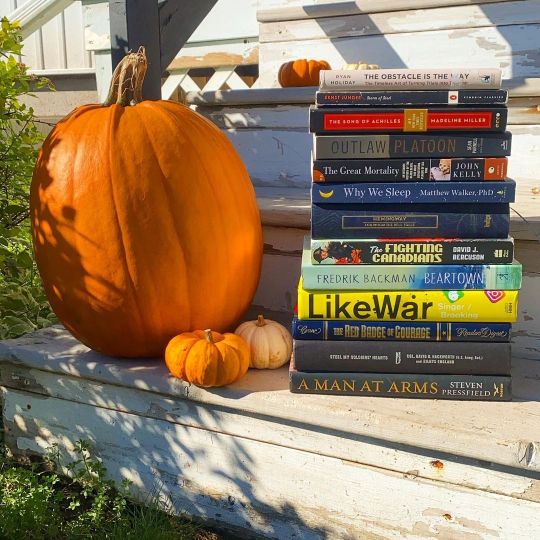
The best time of year is finally here bringing all of its pretty Fall colours and spookiness with it, so I may as well share the last of my summer reading. This haul includes everything from August to the end of September. Over that time I read the following: 1. Men at Arms by Steven Pressfield (2021) 2. Steel my Soldier’s Hearts by Col David Hackworth (2002) 3. The Red Badge of Courage by Stephane Crane (1895) 4. LikeWar: The Weaponization of Social Media by Emerson T. Brooking and P. W. Singer (2018) 5. Beartown by Fredrik Backman (2016) 6. The Fighting Canadians by David Bercuson (2008) 7. For Whom the Bell Tolls by Ernest Hemingway (1940) 8. Why We Sleep by Mathew Walker (2017) 9. The Great Mortality by John Kelly (2005) 10. Outlaw Platoon by Sean Parnell (2012) 11. The Song of Achilles by Madeline Miller (2011) 12. Storm of Steel by Ernst Jünger (1920) 13. The Obstacle is the War by Ryan Holiday (2014) #bookstagram #augustreads #septemberreads #fallreads #2021readingchallenge #menatarms #stevenpressfield #steelmysoldiershearts #davidhackworth #theredbadgeofcourage #stephancrane #likewar #emersonbooking #pwsinger #beartown #fredrickbackman #thefightingcanadians #forwhomthebelltolls #earnesthemingway #whywesleep #mathewwalker #thegreatmortality #johnkelly #outlawplatoon #seanparnell #thesongofachilles #madelinemiller #stormofsteel #theobstacleistheway #ryanholiday (at Village of Port Williams) https://www.instagram.com/p/CUvpIMhJJmHsk1i-rEKkTva-8BV7Fr-7wOJ52A0/?utm_medium=tumblr
#bookstagram#augustreads#septemberreads#fallreads#2021readingchallenge#menatarms#stevenpressfield#steelmysoldiershearts#davidhackworth#theredbadgeofcourage#stephancrane#likewar#emersonbooking#pwsinger#beartown#fredrickbackman#thefightingcanadians#forwhomthebelltolls#earnesthemingway#whywesleep#mathewwalker#thegreatmortality#johnkelly#outlawplatoon#seanparnell#thesongofachilles#madelinemiller#stormofsteel#theobstacleistheway#ryanholiday
0 notes
Photo










1500-1599 Recap Part 55:
Isabel had her twins though only Stephen survived.
Eventually it was time for Elizabeth and Margaret to become teenagers with Elizabeth looking like her mother and Margaret looking like Adrian.
Maria became a child.
Then Rose failed her discovery roll and was sentenced to death for being a vampire. When she died her triplets were still alive but Gideon didn’t survive his toddler roll so I started to think that perhaps Larissa and Gideon’s descendants just weren’t meant to thrive.
Parnell and Philippa became children and I started to wonder if they were identical and aside from the changing child hair color and the skin detail freckles they kept randomly aging up with different ones they are. I just keep their hair and clothes different to differentiate but they are fairly distinctive anyways.
#Adrian Carlisle#Rose Laurent#Isabel Tanaka#Elizabeth Ernest#Margaret Carlisle#Wilmot Carlisle#Maria Laurent#Parnell Carlisle#Philippa Carlisle#Stephen Tanaka#The Carlisle Chronicles#Decades Legacy Challenge#1500-1599 Recap#ts4
1 note
·
View note
Text
“Watermelon Woman” 1997, Cheryl Dunye
youtube
“An aspiring black lesbian filmmaker (Cheryl Dunye) researches an obscure 1940s black actress billed as the Watermelon Woman.”
Currently *free* to stream w/o subscription via Criterion Channel / stream on Amazon Prime, Fandor, Kanopy, Criterion Channel, Epix
“Looking for Langston” 1989, Isaac Julien
youtube
“Fantastical reflection on the story of African-American writer and poet Langston Hughes and the 1920s Harlem Renaissance, with archival footage alongside dream-like reconstructions.”
Visit https://www.isaacjulien.com/projects/looking-for-langston/ for more info on the film (recommended) / view clips on Vimeo
“Pariah” 2011, Dee Rees
youtube
“Teenage Alike (Adepero Oduye) lives in Brooklyn's Fort Greene neighborhood with her parents (Charles Parnell, Kim Wayans) and younger sister (Sahra Mellesse). A lesbian, Alike quietly embraces her identity and is looking for her first lover, but she wonders how much she can truly confide in her family, especially with her parents' marriage already strained. When Alike's mother presses her to befriend a colleague's daughter (Aasha Davis), Alike finds the gal to be a pleasant companion.”
Rent on Amazon/iTunes/Vudu/YouTube
“I Am Not Your Negro” 2016, Raoul Peck
youtube
“In 1979, James Baldwin wrote a letter to his literary agent describing his next project, "Remember This House." The book was to be a revolutionary, personal account of the lives and assassinations of three of his close friends: Medgar Evers, Malcolm X and Martin Luther King, Jr. At the time of Baldwin's death in 1987, he left behind only 30 completed pages of this manuscript. Filmmaker Raoul Peck envisions the book James Baldwin never finished.”
Stream on Amazon Prime / Rent on most platforms
“Moonlight” 2016, Barry Jenkins
youtube
“A look at three defining chapters in the life of Chiron, a young black man growing up in Miami. His epic journey to manhood is guided by the kindness, support and love of the community that helps raise him.”
Stream on Netflix
“Tongue Untied” 1989, Marlon Riggs
youtube
“Filmmaker Marlon Riggs gives a voice to communities of gay black men, presenting their cultures and perspectives on the world as they confront racism, homophobia and marginalization.”
Stream on Kanopy / Rent on Vimeo / Check local PBS stations for screenings
“Blind Faith” 1998, Ernest Dickerson
youtube
“John Williams (Courtney B. Vance) is an African-American attorney remembering one of his earliest and most personal cases -- in 1957, his own teenage nephew, Charlie (Garland Whitt), was charged with the murder of a white student. Charlie admits he committed the crime, but John believes the police bullied him into confessing. Charlie insists he is guilty, and the outraged public is more than ready to see the boy punished. Still, John believes Charlie is innocent and defends him in court.”
Stream on YouTube
“Brother to Brother” 2004, Rodney Evans
youtube
“Perry (Anthony Mackie) is a would-be painter struggling to find his voice as an artist and his identity as a black gay man. When his disapproving father kicks him out, he winds up in a homeless shelter where he meets a sympathetic gay poet named Bruce (Roger Robinson). As they get to know each other, Perry learns that Bruce was at the center of the 1920s and '30s Harlem Renaissance and faced many of the same prejudices and challenges in his day that Perry faces now.”
Stream on Urban Movie Channel, rent on most platforms
“Naz & Maalick” 2015, Jay Dockendorf
youtube
“Two closeted Muslim teens living in Brooklyn struggle to come clean about their sexuality.”
Stream on Hulu / rent on most platforms
“Born in Flames” 1983, Lizzie Borden
youtube
“When Adelaide Norris, the black radical founder of the Woman’s Army, is mysteriously killed, a diverse coalition of women – across all lines of race, class, and sexual preference – emerges to blow the System apart.”
Rent on Vimeo (recommended) or Amazon Prime
“Brother Outsider” 2003, Bennett Singer & Nancy Kates
youtube
“Despite his achievements in the Civil Rights Movement, Bayard Rustin was silenced and imprisoned due to being an openly gay man in a homophobic era.”
Stream on Kanopy and Sundance Now / check local PBS stations for screenings
“Check It” 2016, Dana Flor & Toby Oppenheimer
youtube
“Gay and trans teens in Washington, D.C., form a gang to protect each other.”
Rent on Vimeo and most platforms
“Paris is Burning” 1990, Jennie Livingston
youtube
“This documentary focuses on drag queens living in New York City and their "house" culture, which provides a sense of community and support for the flamboyant and often socially shunned performers. Groups from each house compete in elaborate balls that take cues from the world of fashion. Also touching on issues of racism and poverty, the film features interviews with a number of renowned drag queens, including Willi Ninja, Pepper LaBeija and Dorian Corey.”
Stream on Netflix
“The Aggressives” 2005, Daniel Peddle
youtube
“This documentary follows a group of women who are "aggressives," a subculture of lesbians who dress like men and even pass for them in society. These women hide female elements of their bodies and often adopt male personas. However, each of the women defines and utilizes the term "aggressive" slightly differently. They also struggle with the limitations of adhering too closely to the label. A number of the women choose to take part in drag parties and contests.”
Rent on Vimeo and other major platforms / Stream on Kanopy
“Tangerine” 2015, Sean Baker
youtube
“After hearing that her boyfriend/pimp cheated on her while she was in jail, a hooker and her best friend set out to find him and teach him and his new lover a lesson.”
Stream on Hulu
“Portrait of Jason” 1967, Shirley Clarke
youtube
“A black male prostitute and aspiring entertainer recounts his life story for filmmaker Shirley Clarke.”
Rent on Vimeo (recommended) or Amazon Prime
“Kiki” 2016, Sara Jordeno
youtube
“In New York City, LGBTQ youth-of-color gather on the Christopher Street Pier to practice the performance-based art form Ballroom, which was made famous in the early 1990s by Madonna's music video ‘Vogue’ and the documentary ‘Paris Is Burning.’”
Stream on Hulu / rent on most platforms
0 notes
Text
Zebra Horror to 1991
Zebra horror through 1991Below is a comprehensive list of the almost 200 horror novels Zebra Books released through 1991. Horror continued to be released regularly until Zebra shut down their horror line in 1996, but starting in 1991 horror started started splitting off into Silence of the Lambs knock-offs, Interview with a Vampire copies, and young adult style covers. A full cover gallery with shop links over at Trash Menace Gallery 1974 Dementia by Keith Parnell 1975 Satan's Daughters by Othello Peters 1977 Hell Hound by Ken Greenhall The Soul by Ron Gorton 1978 Replica by Lionel Saben The Ashes of Tamar by Elizabeth Wade 1979 Dracula in Love by John Shirley Benediction by Joseph P. Furek There is a Serpent in Eden by Robert Bloch Long Night by P.B. Gallagher The Rite by Gregory Douglas 1980 Caly by Sharon Combes Wild Violets by Ruth Baker Field The Nest by Gregory Douglas Cherron by Sharon Combes 1981 Moondeath by Rick Hautala The Devil's Kiss by William W. Johnstone Act of Love by Joe R. Lansdale The Witching by Fritzen Ravenswood Great Liquidator by J.V. Grombach Unholy Smile by Gregory A. Douglas Death-Coach by J. N. Williamson Mysteries of the Worm by Robert Bloch Unholy Goddess by Baker Stein Halloween II (Novelization) by Jack Martin The Spawning by Fritzen Ravenswood Ghost Mansion by J. N. Williamson Death-Angel by J. N. Williamson Sweet Revenge by Dick Beaird 1982 The Uninvited by William W. Johnstone The Unblessed by Paul Richards The Evil One by J. N. Williamson The Initiation by William W. Johnstone The Witching by Fritzen Ravenswood Death-School by J. N. Williamson Moon Lake by Stephen Gresham Traces by Patricia Wallace Night Bait by Phillip Straker The Trident by Joel Hammil Extraterrestrial by Julian Shock Horror Mansion by J. N. Williamson Slice of Life by James Kisner Wolfsbane by William W. Johnstone Blood Knot by Bruce Algozin Moonbog by Rick Hautala Night Lust by Phillip Straker Death-Doctor by J. N. Williamson 1983 Devil's Heart by William W. Johnstone Videodrom by Jack Martin A Crying Shame by William W. Johnstone White Noise by R.F. Beaird The Taint by Patricia Wallace The Nursery by William W. Johnstone MaMa by Ruby Jean Jensen Death Screen by Richard F. Beaird 1984 Rip Tide by Donald D. Cheatham The Stalker by Claude Teweles Rockabye Baby by Stephen Gresham The Devil's Touch by William W. Johnstone 1985 Sweet Dreams by William W. Johnstone Home Sweet Home by Ruby Jean Jensen The Children's Ward by Patricia Wallace Daddy's Little Girl by Daniel Ransom Half Moon Down by Stephen Gresham Soul Eater by Dana Brookins Only Child by Patricia Wallace Best Friends by Ruby Jean Jensen Child's Play by Andrew Neiderman 1986 Rockinghorse by William W. Johnstone Twice Blessed by Patricia Wallace The Doll by Josh Webster Dew Claws by Stephen Gresham Cat's Cradle by William W. Johnstone Night Stone by Rick Hautala Wait and See by Ruby Jean Jensen Toys in the Attic by Daniel Ransom The Alchemist by Les Whitten Jack-In-The-Box by William W. Johnstone Deadly Ernest by Daniel Lynch Teacher's Pet by Andrew Neiderman The Shadow Man by Stephen Gresham 1987 Piper by Brett Rutherford and John Robertson The Dollkeeper by Jack Scaparro Fertility Rights by Fay N. Zachary Annabelle by Ruby Jean Jensen Sight Unseen by Andrew Neiderman Blood Bath by Linda Stahl Borlik Midnight Boy by Stephen Gresham The Devil's Cat by William W. Johnstone Night Whisper by Patricia Wallace Cry Wolf by Alan B. Chronister Shadow Child by Joseph A. Citro Sleep Tight by Matthew Costello Baby Grand by William W. Johnstone The Evil One by J.N. Williamson Chain Letter by Ruby Jean Jensen Night Caller by Daniel Ransom A Killing Frost by Daniel Lynch Water Baby by Patricia Wallace Dream House by Christopher Fahy Toy Cemetary by William W. Johnstone Witch Child by Elizabeth Lloyd 1988 Smoke by Ruby Jean Jensen Little Brothers by Rick Hautala Guardian Angels by Joseph A. Citro Hocus-Pocus by Jack Scaparro Blood Sisters by Deborah Sherwood House of Illusion by Ruby Jean Jensen Deadly Nature by V. M. Thompson Grim Reaper by O'Neil de Noux Abracadabra by Stephen Gresham Witch Daughter by Elizabeth Lloyd Sandman by William W. Johnstone Devil's Moon by William M. Carney Play Time by Morgan Fields See No Evil by Patricia Wallace Ten Little Indians by E. Patrick Murray The Lost Children by Brett Rutherford Runaway by Stephen Gresham Keepers of the Beast by Jack Maclane Jump Rope by Ruby Jean Jensen Eternal Bliss by Christopher Fahy Baby Doll by Marilyn Knight Night Touch by Stephen Gresham 1989 Goodnight Moom by Jack MacLane Carnival by William W. Johnstone Brain Child by Stephen George Moonwalker by Rick Hautala Pendulum by Ruby Jean Jensen Project God by V. M. Thompson Dark Souls by Barry Porter Blood Dreams by Jack MacLane Beasts by Stephen R. George Demon's Eye by Stephen Gresham Tree House by Victor Mullen Deathsong by Jack Scaparro Spellcaster by J. Edward Ames Monday's Child by Patricia Wallace Deadly Harvest by Morgan Fields Death Stone by Ruby Jean Jensen Secret Orders by H. Paul Jeffers Dark Miracle by Stephen R. George The Manipulator by Dana Brookins Junkyard by Barry Porter 1990 Vampire Child by Ruby Jean Jensen Hindsight by Ronald Kelly Blood Wings by Stephen Gresham Darksong by Jean Simon Lullabye by Patricia Wallace Flesh Stealer by Pauline Dunn The Lyssa Syndrome by Christopher Fahy Dark Reunion by Stephen R. George Children of the Shadows by Don L. Freeman Lost and Found by Ruby Jean Jensen Evilway by Ryan O. Moses Pitfall by Ronald Kelly Dollies by Pat Graversen The Devil's Coin by Mark Manley Poison Pen by James Kisner Mindscream by R.D. Zimmerman Shaman Woods by Morgan Fields Thrill by Patricia Wallace Demonic Color by Pauline Dunn Grandma's Little Darling by Stephen R. George Just Before Dark by Jack MacLane Victoria by Ruby Jean Jensen Earthblood by James Kisner 1991 Stones by Pat Graversen Wild Card by Jean Simon Hide and Seek by William M. Carney Grandfather by Anne Joseph Something Out There by Ronald Kelly Perfection by Marc Berrenson The Vampire Memoirs by Traci Briery & Mara McCuniff Watchers in the Woods by William W. Johnstone Blood Sabbath by Leigh Clark The Living Dark by Stephen Gresham Waltz With Evil by P.D. Rozzi Little Brother by Bill Eidson The Forgotten by Stephen R. George The Crawling Dark by Pauline Dunn The Burying Point by Ann Brahms Celia by Ruby Jean Jensen Faith Killer by Josh Webster Wind Chimes by R. R. Walter Cold Whisper by Rick Hautala The Attic by Jack Scaparro Dr. O by Glenn Hale The Quagmire by James Kisner Vampire Blood by Kathryn Meyer Grifftth Sweet Revenge by Jean Simon The Gifted by Jack Caravela The Night Seasons by J.N. Williamson Deadly Breed by T.J.Kirby Baby Dolly by Ruby Jean Jensen Listen to the Shadows by Joan Hall Hovey Moon of the Werewolf by Ronald Kelly More Zebra Horror at Too Much Horror Fiction, Fright.com, and Vault of Evil. This is the result of looking up over 3500 titles by ISBN number. Horror made up just over five percent of Zebra's output. Mostly historical romance, then westerns, with several adult western series. Men's Adventure will be covered separately. Compared with the 70s, Zebra stuck to only a few specific subgenres. The only historical oddities were trivia books and gross humor collections.
6 notes
·
View notes
Text
#TRQ day 22
HP count base: 540.4 HP pages read: +37.8 social media: +1 total: 579.2 HP
XP count base: 400 XP completed book: +10 total: 410 XP level: 8
currently: knight questing the first book of a series: Mort – Terry Pratchett (first in Death series) a book with a verb in its title: The Life-Changing Magic of Tidying Up: The Japanese Art of Decluttering and Organizing – Marie Kondo* a book with a weapon on its cover: Soul Music – Terry Pratchett a book with a red cover: The Curious Incident of the Dog in the Night-time – Mark Haddon a book that has a tv/movie adaptation: Matilda – Roald Dahl
side quests respawn: Memoirs of a Geisha – Arthur Golden expansions: Triggger Warning: Short Fictions and Disturbances – Neil Gaiman time warp: The Merchant of Venice – William Shakespeare grind: 1Q84 – Haruki Murakami* potions: A Paris All Your Own: Bestselling Women Writers on the City of Light animal companion: Mosquitoland – David Arnold mini-game: Selected Poems – e e cummings open world: ??
rogue quest – COMPLETED a banned book: And Tango Makes Three – Justin Richardson and Peter Parnell* a book cover with a partially obscured face: Love, Loss, and What We Ate: A Memoir – Padma Lakshmi* a book with < 500 ratings on goodreads: Daring to Drive: A Saudi Woman’s Awakening – Manal al-Sharif* (492 ratings) a book published by a small press: Kingdom Cons – Yuri Herrera* (& other stories) a book with a one word title: Hogfather – Terry Pratchett
mage quest – COMPLETED the first book of a series: Mort – Terry Pratchett (first in Death series) a book set in a different world: Reaper Man – Terry Pratchett a book based on mythology: Norse Mythology – Neil Gaiman a book that contains magic: Town of Cats – Haruki Murakami* a book with a one word title: Hogfather – Terry Pratchett
bard quest – COMPLETED a book that has a tv/movie adaptation: Matilda – Roald Dahl a fairy tale retelling: Heartless – Marissa Meyer a book cover with striking typography: A Moveable Feast – Ernest Hemingway a book translated from another language: Colorless Tsukuru Tazaki and His Years of Pilgrimage – Haruki Murakami* a banned book: And Tango Makes Three – Justin Richardson and Peter Parnell
2 notes
·
View notes
Text
Hyperallergic: The Irish for Noh: The Masks of William Butler Yeats
Alvin Langdon Coburn’s portrait of W. B. Yeats, from the book Men of Mark, 1913.
“Man is least himself when he talks in his own person,” declares Oscar Wilde, “Give him a mask and he will tell you the truth.” Wilde’s fellow Irishman — poet William Butler Yeats — agreed.
Although Yeats’ poetry is often misconstrued as autobiographical, the poet scorned such transparency, calling it “unimaginative” and comparing realism to “putting photographs in a plush frame.”
From his “Crazy Jane” poems (1933) to his eulogies for the cause of Irish nationalism, Yeats donned many masks throughout his poetry career – from the punch-drunk dreamer in “Lake Isle of Innisfree” (1893) to the doomed pilot in “An Irish Airman Foresees His Death” (1917) to the inhibited aesthete of “Among Schoolchildren,” (1928) and the dying sage of “The Tower” (1928).
For Yeats the personae — the Latin word for “masks” — voicing his poems are as meaningful and expressive as the poem’s words. This is why he looked back to ancient Greek models of “sung” verse and why he sought a modern literature in which form and content are indivisible, a quest he immortalized in the famous rhetorical question, “How can we know the dancer from the dance?”
And it is Yeats and dance — not Yeats and poetry — that takes center stage in the multimedia exhibition, Simon Starling: At Twilight (After W.B. Yeats’ Noh Reincarnation) at Japan Society, which explores the Irish poet’s debt to the formalism of Japanese Noh theater.
The exhibition draws extensively on material relevant to British artist Simon Starling’s theatrical production, At Twilight. When it was performed in Glasgow last summer, At Twilight included as part of its staged docudrama a creative revival of Yeats’ one-act Noh-inspired play At the Hawk’s Well (1916) which combined chant, verse drama, masked actors, pantomime, dance, gesture, and a musical score.
Simon Starling, “At Twilight: The Guardian of the Well, (After Edmund Dulac)” (2014–2016), hand-painted cotton muslin. Made in collaboration with Kumi Sakurai and Atelier Hinode, Tokyo. (image courtesy the artist and The Modern Institute/Toby Webster Ltd., Glasgow)
The star of this expansive exhibition is a video installation featuring the spellbinding “hawk dance” from Yeats’ play, performed by the Scottish Ballet and choreographed by Javier de Frutos, a revival based on archival photos of the original production costume, which was created by the French designer and illustrator Edmund Dulac.
Appropriately, the exhibition is as multilayered as Yeats’ detours into writing for the stage. Around the turn of the 20th century, as he reached the peak of his poetic powers, he began composing verse plays while struggling to establish an Irish national theater that might voice what he cryptically called the “deep mind” — truths embedded within traditional Irish legends and myths. As tireless as Yeats was in pursuit of this perfected art, the results were mixed.
In 1899, Yeats co-founded the short-lived Irish Literary Theater but years later managed to help set up the far more enduring Irish National Theater Society, housed at the Abbey Theater. He also wrote ten original plays, none more culturally hybrid than the Noh-inspired At the Hawk’s Well.
How Yeats came to Noh theater is one of the great plot lines behind At Twilight. While World War I raged in Europe, Yeats was living in Stone Cottage in the forests of Sussex, England. There he was assisted by the expatriate American poet Ezra Pound, with occasional visits from Japanese poet Yone Noguchi. Both poets had a hand in introducing Yeats to the refined, abstracted aesthetics of classical Japanese verse and Noh drama. In both art forms, the affective impact of the work supersedes its meaning. Yeats was ripe for such an indoctrination.
Noh mask dating back to 17th-18th century (Zō-onna type), Tokyo National Museum (via Wikipedia)
More than a decade earlier, in his polemical essay, “The Reform of the Theater” (1903), Yeats had argued against the then-prevalent realism, typified by the British stage productions of that period. He called instead for a stylized and aristocratic theater with “simplified acting” built around “emotional subtlety” that restores to language its lost “sovereignty” and replaces the “broken and prosaic speech of ordinary recitation” with “the musical lineaments of verse or prose that delights the ear with a continually varied music.”
This call for the “reform” of theatrical realism laid the groundwork for the poet’s interest in Noh while revealing his conflicted loyalties about class and national identity. Yeats was a Protestant born in Dublin, raised partly in London and in County Sligo where he absorbed Irish traditional legends and folkways. Unlike his generational peers who came from similar upper-class Anglo-Irish stock, Yeats was an Irish nationalist who hoped for a postcolonial Ireland revitalized by an embrace of the Celtic imagination and the folk beliefs of its agrarian past.
Irish Volunteers barricade Townsend Street, Dublin, to slow down the advance of troops, during the Easter Rising, 1916. (Photo by Hulton Archive/Getty Images, public domain)
Yeats’ Irish populism was always complicated, however. In fact, though he served in the Irish Senate late in life, he was, during his years working in the theater, more of a political idealist and reactionary than a progressive or a pragmatist. He loathed any popular craving for realism, both in literature and in the Realpolitik of post-Parnell Irish nationalism. He abhorred what he considered crass provincialism among Irish working-class audiences, the very people who took to the streets in the April 1916 Easter Uprising and fought in the ensuing Irish Civil War — two bloody conflagrations that stirred as much ambivalence in Yeats as did the narrow aesthetics of Irish theater.
Sure enough, in 1913, while learning about Noh theater, which flourished in 14th and 15th-century Japan, Yeats thought he had found what he was looking for – a form of theater that could reconcile these cultural tensions. He probably detected in Noh’s yūgen – loosely translated as “graceful elegance” or “subtle mystery” — a formally strict construct within which he could update old Irish tales while elevating such material above the “mob” mentality, framing the stories into abstract plays that could “pass for a few moments into a deep of the mind that had hitherto been too subtle for our habitation.”
So the Noh model allowed Yeats to craft such a non-realistic, aristocratic play as At the Hawk’s Well, combining mysticism, ritualized gesture, stark scenery, a poetic libretto, and “pantomimic dance” into a single art form.
Simon Starling, “At Twilight: Old Man (After Edmund Dulac)” (2014-2016), Paulownia wood, Japanese lacquer, gesso, pigment, glue, animal hair. Mask made in collaboration with Yasuo Miichi, Osaka. (image courtesy of the artist and The Modern Institute/Toby Webster Ltd., Glasgow)
Yeats’ At the Hawk’s Well recasts the Irish myth of Cuchulain by depicting the warrior as a “Young Man,” who seeks the “life-giving waters” at a well, where he meets both an embittered “Old Man” and a mysterious girl/witch/hawk who is “Guardian of the Well.”
And though Yeats’ play provides the unifying thread, Starling’s exhibition casts a far wider net, taking into account countless Modernist crossroads where Eastern aesthetics met the European avant-garde of the 1910s – in poetry, sculpture, painting, and design.
To do so, the exhibition juxtaposes historical photos and works by Western artists with original and replica Japanese Noh masks, each animated in a timeless almost ecstatic expression — part scowl, part grimace, part grin.
There are new masks and costumes made by Starling in collaboration with Japanese mask maker Yasuo Michii and costume designer Kumi Sakurai. Certain masks represent poets and artists in Yeats’ circle. In addition to a Noh-inspired mask of the Irish poet, other Modernists have cameos in the exhibition. The hieratic face of Ezra Pound as immortalized in the famous sculpture by Henri Gaudier-Brezska inspired one mask, while another borrows the sleek, totemic, abstract style of Constantin Brancusi for the arts patron Nancy Cunard, in whose London salon Yeats’s play was first staged. These are gracefully suspended from sculpted replicas of a stark, leafless tree that was featured in the original production of At the Hawk’s Well — and will remind many visitors of the similarly jagged, bare, and nearly dead tree in Samuel Beckett’s Waiting for Godot (1953). Years later, Alberto Giacometti sculpted a reiteration of the tree, possibly inspired by the Yeats work, for a 1961 production of Godot.
Simon Starling, “At Twilight: W. B. Yeats” (2014-2016), Paulownia wood, Japanese lacquer, gesso, pigment, glue, animal hair. Mask made in collaboration with Yasuo Miichi, Osaka. (image courtesy of the artist and The Modern Institute/Toby Webster Ltd., Glasgow)
Despite the well-curated profusion of archival materials – photographs, notes, letters and even a sprawling, wall-sized “Mind Map” that charts the zigzagging influences among various Modernist art forms — it is not so easy to figure out what Yeats specifically thought about what he had achieved, artistically speaking, by adopting Noh techniques and methods for At the Hawk’s Well.
In an introductory essay he wrote for the collection Certain Noble Plays of Japan (1916), edited by Pound and Ernest Fenollosa, Yeats provides at least one clue, homing in on the way Japanese Noh dramatic verse recursively exploits a single recurring image or metaphor. Yeats describes this centrifugal or catalyzing force as the “rhythm of metaphor” and compares to it to “the echoing rhythm of line in Chinese and Japanese painting.”
The Irish poet’s insight indirectly associates the swaying dynamism of key words within Noh dramaturgy to the slow, studied, dance-like motions of the masked actor onstage. Echoing Yeats, Royall Tyler, a British translator and specialist in Japanese literature, refers to the push-and-pull poetics of recurring images and metaphors in Noh drama as “pivot phrases” or “pivot words” in which “a word, or even part of a word, may mean one thing when taken with what precedes and what follows.”
More recently, in her new study of Noh and European Modernism, Learning to Kneel (Columbia University Press, 2016), Claire Preston further theorizes that Yeats’ was seduced by the supernatural qualities delivered in Noh stagecraft, such that “By translating the masks, chorus, music and dance of noh for his Cuchulain cycle, Yeats hoped to turn the actor’s body […] into a container that can be filled by spirits, ghosts and gods.”
Simon Starling, “At Twilight: Young Man (After Edmund Dulac)” (2014-2016), Mask: Paulownia wood, Japanese lacquer, gesso, pigment, glue, animal hair. Mask made in collaboration with Yasuo Miichi, Osaka. (image courtesy of artist and The Modern Institute/Toby Webster Ltd., Glasgow)
Perhaps Yeats found in the model of Noh theater a fine balance, which he pursued in his own poetry, between the spirit world of the dead and the embodied one of the living. Put another way, Yeats’ poetics seek a balance between surface and depth, between the mask of a human face and the personality hidden beneath it.
After all, Yeats returned constantly to the subject of faces. In the poem “Before the World Was Made” (1933), he celebrates the “vanity” of mirrors and of makeup, as the speaker declares that, although she seems to be polishing a bodily surface, she is ultimately producing “the face I had before the world was made.”
Thirty years earlier, in his dramatic dialogue between lovers in the poem “The Mask” (1903), Yeats pits the romantic magnetism of the lover’s face against the need to see into the essence below the surface, “lest you are my enemy.”
In the end, the lover refuses to figuratively unmask, reminding the companion that the theater of life is the only reality there is. And, besides, “What matter [the mask], so there is but fire/In you, in me?”
Simon Starling: At Twilight (After W. B. Yeats’ Noh Reincarnation)continues at Japan Society (333 East 47th Street, Midtown East, Manhattan) through January 15.
The post The Irish for Noh: The Masks of William Butler Yeats appeared first on Hyperallergic.
from Hyperallergic http://ift.tt/2jfcrGj via IFTTT
2 notes
·
View notes
Text
Verses in the Night (III)
(After an Evening Spent in Reading the Big Boys Girls)
Melange for the Unknown George
“George is a lion... There is no pope.” --Getrude Stein
George is a lion; There is no pope; Death is the scion Of the house of Hope. George is a gazelle; There is no Freud; Charles Parnell Looked like Ernest Boyd. George is a llama; There is no stork; Papa loves Mama Like Jews love pork. There’s no Frances Newman-- In a pig’s right eye! Death is as human As a mandrake’s cry. George is a raccoon; he Insists there is art. Little Annie Rooney Is my sweetheart.
--Dorothy Parker
1 note
·
View note